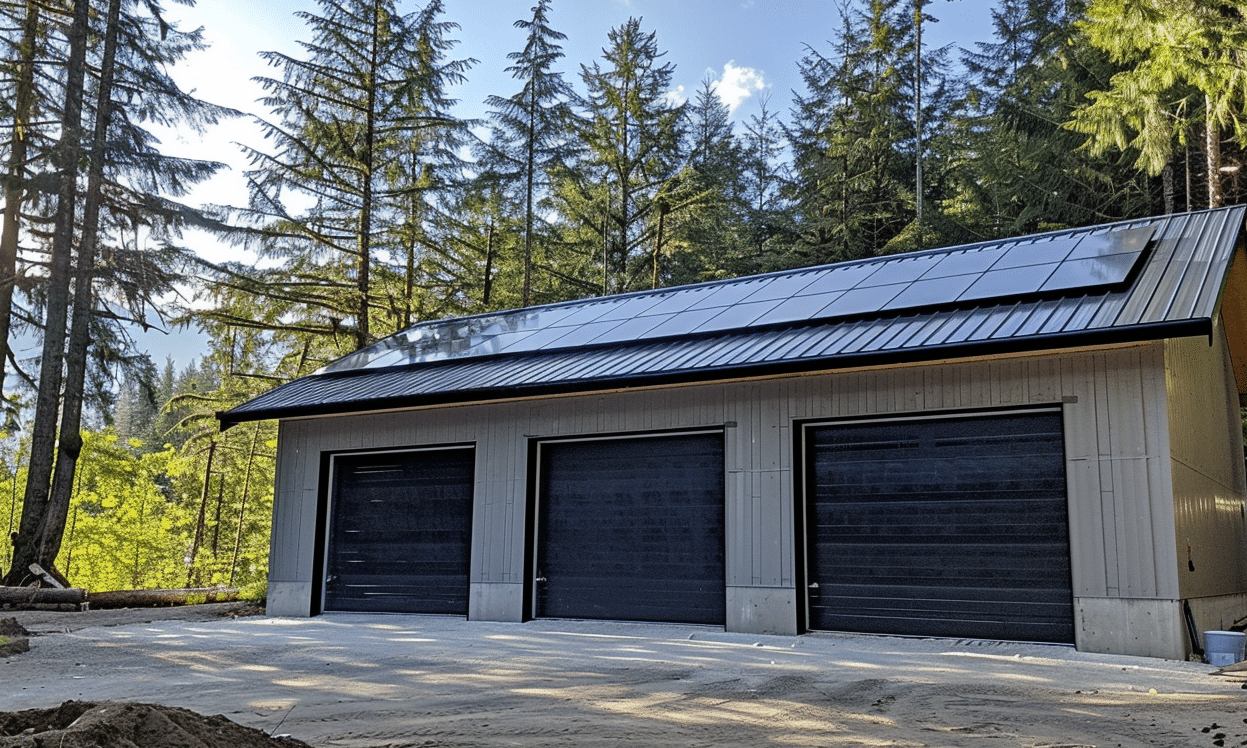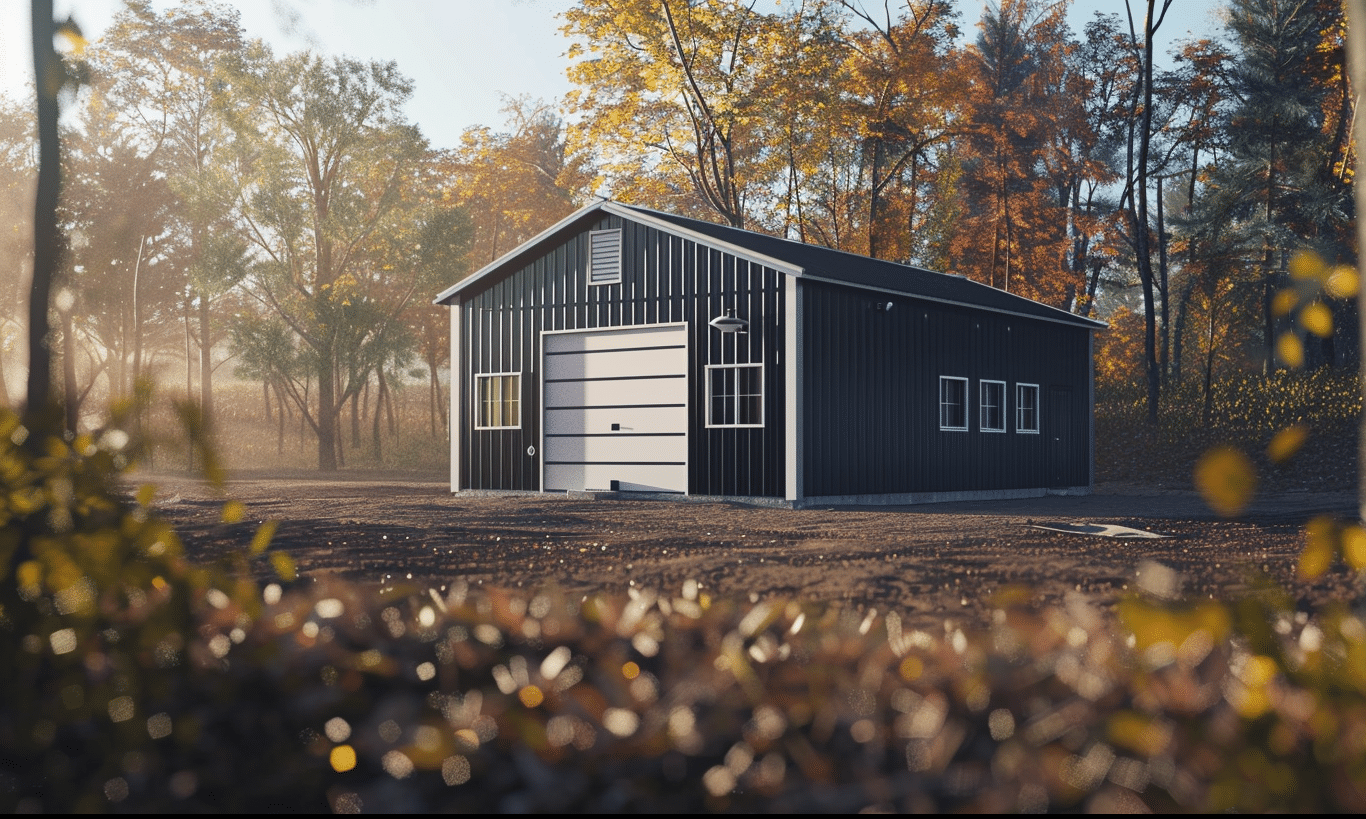As a proud owner of a pole barn, you’ve probably learned to appreciate the flexibility and utility these structures offer. From agricultural applications to charming personal retreats, pole barns are versatile, customizable, and when well-insulated, highly efficient. However, the secret sauce to maximizing comfort year-round in your pole barn is often overlooked: proper insulation. Let’s explore some effective strategies for pole barn insulation and why it’s crucial for maintaining comfort in this practical space.
Why is Pole Barn Insulation Important?
You wouldn’t think of building a house in the harsh Canadian winters without insulation, would you? In the same vein, insulating your pole barn isn’t just an optional upgrade—it’s a necessity. Without insulation, your pole barn can become an oven in the summer and a freezer in winter.
But it’s not just about temperature regulation. Effective pole barn insulation can reduce energy bills, protect the barn’s structural integrity, and create a cozier environment for workers, livestock, or equipment. The key is selecting the right insulation materials and techniques tailored to your specific needs.
Types of Insulation Suited for Pole Barns
Much like finding the perfect outfit, the right insulation solution will vary depending on your pole barn’s unique requirements. The following are some of the most common types of insulation suitable for pole barns:
Spray Foam Insulation
This option is a fan favorite for a reason—it offers superior thermal resistance and seals off air leaks efficiently. Spray foam insulation is ideal if your pole barn is used for residential purposes, such as part of Energy-efficient custom homes. It creates an airtight barrier, providing excellent temperature regulation and moisture control.
Fiberglass Insulation
Tried and true, fiberglass insulation is synonymous with affordability and efficiency. Though less effective at sealing air leaks compared to spray foam, its easy installation process and cost-effective nature make it a popular choice. It is predominantly utilized in walls and ceilings through rolls and batts.
Reflective Insulation
Reflective insulation works wonders in hot climates. Designed to reflect heat rather than absorb it, this type of insulation is a great choice if you’re looking to avoid the summertime heat. However, its performance dwindles in cooler climates without adequate support from other insulation materials.
Factors to Consider When Insulating Your Pole Barn
Not all pole barns are created equal, and neither are their insulation needs. Therefore, here are a few considerations to help determine the most effective insulation strategy for your pole barn:
Climate
The geographical location of your pole barn highly influences its insulation needs. Cold winters call for higher R-value materials to retain heat, whereas warm regions might benefit more from reflective insulation.
Usage
How do you use your pole barn? Consider the activities and equipment it accommodates, as working environments and machinery housing require different insulation specifications. Thus, the type, thickness, and layout of insulation will vary based on whether your pole barn serves livestock, vehicles, or people.
Budget
A crucial consideration is undoubtedly budget. Various insulation options range widely in cost, so establishing a practical budget upfront will assist in narrowing down the feasible choices for your pole barn project.
Step-by-Step Guide to Insulating a Pole Barn
Now that you’re aware of the types of insulation suited to pole barns and the factors worth considering, here’s a step-by-step guide that can help streamline the insulation process:
Step 1: Evaluate Your Barn’s Structure
Before selecting an insulation material, evaluate your pole barn’s structural components. Look for any existing damages, leaks, or drafts that could impact insulation effectiveness.
Step 2: Choose the Appropriate Insulation Material
Using our guide above, select the insulation material that best aligns with your barn’s climate, usage, and budget requirements. Consider a combination of methods like spray foam and fiberglass for optimal results.
Step 3: Install Vapor Barriers
Vapor barriers are essential in preventing moisture buildup, which can lead to mold growth and structural deterioration. Add a vapor barrier to the floor and ceiling before installing insulation materials.
Step 4: Seal All Gaps and Leaks
Proper sealing prevents air leaks and maintains temperature consistency. Pay attention to doors, windows, and any openings in the barn, ensuring they are thoroughly sealed.
Step 5: Install the Insulation
Follow manufacturer’s instructions to adhere to best practices and ensure effective installation. Whether applying spray foam or hanging fiberglass batts, precise application is key to achieving desired insulation outcomes.

Keeping Long-term Efficiency in Mind
Proper pole barn insulation doesn’t end with installation. Regular maintenance and periodic upgrades can help maximally retain energy efficiency long-term. By establishing a well-insulated environment, pole barns not only cater to human activities but can also emulate aspects of Metal Building Insulation capabilities, enhancing the structure’s operational and environmental benefits.
To explore more about pole barns and different insulation solutions, why not reach out to Your Building Team? We specialize in all things related to insulation and pole barns, ensuring you get not just the job done, but the job done right.
For official guidelines and expert advice, you can refer to Natural Resources Canada – Pole Barn Insulation. It’s an excellent resource for anyone keen on finding further insights and guidelines on efficient pole barn insulation.
Preserving the comfort of your pole barn boils down to thoughtful insulation planning and execution. By embracing the power of insulation, your pole barn’s environment will remain adaptive, enjoyable, and fulfilling—making it a haven of comfort through all seasons.










